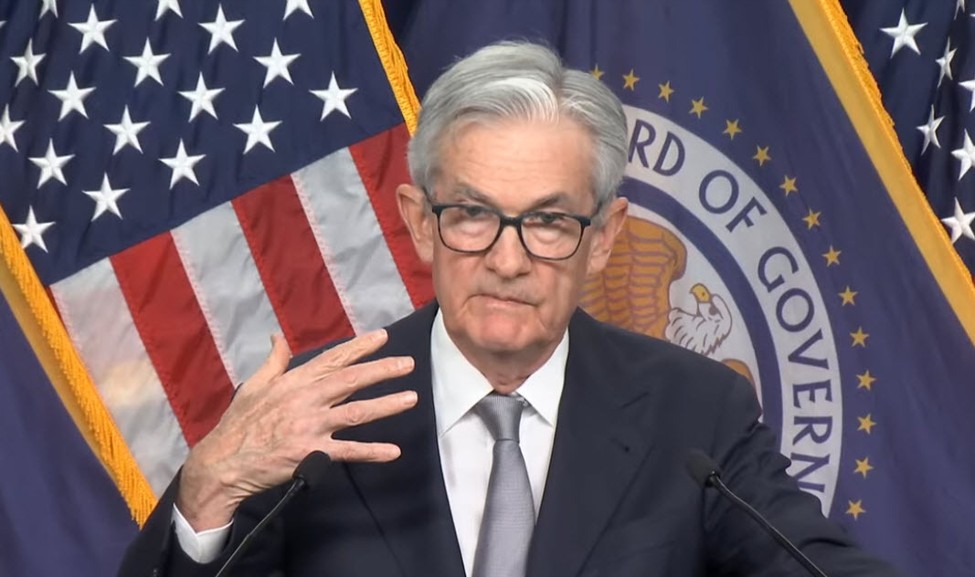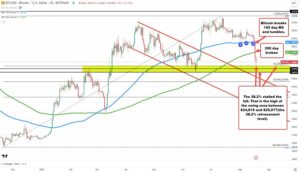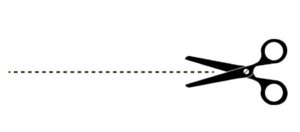
NOTE: Previews are listed in day order
UK Jobs (Tue):
Consensus figures are yet to be published for the
employment report, however, headline earnings growth in the 3M/YY period to
October is expected to slow to 7.8% from 7.9% with the ex-bonus figure seen
slipping to 7.4% from 7.7%. The prior report saw the unemployment rate
unexpectedly hold steady at 4.2%, albeit many analysts have dismissed the
validity of these figures given that they are using “experimental data”. That
being said, vacancies have continued to decline and PAYE payroll growth has
slowed. On the earnings front, both headline and ex-bonus earnings slowed in
the 3M/YY period to September. Ahead of the upcoming release, economists at
Pantheon Macroeconomics “look for zero month-to-month growth in the PAYE
measure of employees in November, which would be consistent with an ongoing
increase in the unemployment rate”. On the earnings front, the consultancy
suggests “most of the available indicators point to a smaller month-to-month
increase in average weekly wages, excluding bonuses, in October than in the
first nine months of this year”. From a policy perspective, the release is
unlikely to have much bearing on Thursday’s announcement, however, any notable
fluctuation in wage growth could see traders reassess 2024 rate calls.
US CPI (Tue):
Headline CPI is expected to rise +0.1% Y/Y in
November (prev. +0.0%). Core CPI is seen rising +0.2% M/M, matching the October
rise. The data comes a day ahead of the FOMC policy announcement (unchanged
expected), and while it is unlikely to shift the dial for December, it may help
shape expectations about future Fed policy easing, with market expectations
looking for 125bps of rate cuts in 2024. Fed Chair Powell recently reminded us
that inflation was still well above target, though acknowledged it was moving
in the right direction, with inflation coming down meaningfully of late. Still,
the Fed Chair said he wants to see more progress, and retained optionality for
resuming rate hikes if the situation demanded.
Japanese Tankan Survey (Tue):
Participants will be looking to see if there is a
continued improvement in sentiment among Japan’s large manufacturers after the
mostly better-than-expected readings last quarter; that Q3 survey topped
forecasts, with the headline Large Manufacturing Index at 9.0 (vs exp. 6.0),
while sentiment amongst large non-manufacturers climbed to the highest since
1991 at 27.0 (exp. 24.0) and Large All Industry Capex Estimate improved as
expected to 13.6% (exp. 13.6%). The better-than-expected sentiment among large
enterprises provides encouragement for the economy; SMBC Nikko Securities noted
the Japan was on course for domestic-demand-led growth and the prior survey had
also shown an improved outlook amongst large industries. Further, the Reuters
monthly Tankan survey ¬– which is seen to provide a signal for the BoJ’s
quarterly release – has shown two consecutive months of improvement, with
December’s gauge rising to 12.0 from a previous of 6.0 in November, and 4.0 in
October.
FOMC Announcement (Wed):
The FOMC will maintain rates at 5.25-5.50% at its
December policy meeting. The consensus now thinks that the Fed is done with
rate hikes, despite Chair Powell stating before the pre-meeting blackout that
the central bank was prepared to tighten policy further if it becomes
appropriate to do so. The market’s attention is now rapidly shifting towards
when the Fed will begin cutting rates, and traders will look to the updated
projections, and how many rate cuts the Fed is pencilling in for next year (in
the September SEP, the Fed saw rates ending 2024 at between 5.00-5.25%).
According to a Reuters poll, economists see the Fed holding rates at current
levels until July 2024, but money markets are fully pricing the first rate cut
in May, with a decent chance that it could even come in March. The Fed may be
reticent to give credence to market expectations since it risks undoing some of
its tightening efforts to bring still-above target inflation back down.
Analysts expect progress on tackling inflation to continue, but according to
the Reuters survey, all inflation measures polled (CPI, core CPI, PCE, core
PCE) are all seen above the Fed’s 2% goal until at least 2025, and this has led
some to argue that the market is too aggressive in its dovish pricing. Analysts
are also already thinking about the optics of how the Fed will frame the
loosening of policy. According to the Reuters poll, economists say the first
cut will be framed as an adjustment of real rate of interest, not the start of
monetary stimulus (real rates would become more restrictive if left unchanged
as inflation declines). “With markets already convinced that the Fed’s
tightening cycle is over, the focus at the December FOMC meeting will be on any
clues as to how soon and how far rates will be cut,” Capital Economics says.
“We suspect officials will still be wary of sending an overly dovish message in
the updated statement and projections and any explicit discussion of near-term
rate cuts is unlikely,” it adds, “nevertheless, the Fed will need to acknowledge
the reality that inflation is rapidly heading back to the 2% target.”
BCB Announcement (Wed):
Since August, the BCB has been in an easing cycle,
and has thus far trimmed rates by 150bps, taking it to 12.25% in November.
Guidance from officials suggests the central bank will continue the cadence of
-50bps at its December meeting, as inflation is well-behaved despite being
slightly above the target. BCB chief Campos Neto explained that as inflation
falls, real rates rise, giving the BCB scope to lower rates and for policy to
still be restrictive. Campos Neto also said that the current pace of easing was
appropriate, adding that this signalling will be the pace for the next two
meetings. According to the BCB’s own poll, economists see the Selic ending this
year at 11.75%, and see further declines to 9.25% by the end of 2024.
UK GDP (Wed):
Expectations are for October’s monthly GDP to
contract by 0.1% (vs an expansion of 0.2% in the prior month). The September
release saw the overall Q3 print flat at 0% vs. the 0.2% expansion seen in Q2
with the UK avoiding a contraction, thanks in part to net imports. For the
upcoming report, analysts at Investec suggest that services (which accounts for
79% of total GDP) likely saw 0.2% in gross value added, with softness also seen
in retail sales and strike action in the public sector. On the production front,
the Investec suggests that soft PMIs are indicative of “stuttering
manufacturing output”. More broadly, Investec notes “a common driver of the
weaker trend in the economy is the higher interest environment, which is
filtering through to GDP progressively as households and firms refinance
expiring fixed-term borrowing”. From a BoE perspective, greater attention will
likely be placed on Tuesday’s labour data, which itself will ultimately have
little impact on the immediate policy path.
New Zealand GDP (Wed):
Q3 Q/Q GDP is expected at 0.2% (prev. 0.9%) and
the Y/Y metric is seen at 0.4% (prev. 1.8%). The RBNZ has pencilled in a Q/Q
figure of 0.3%. Analysts at Westpac believe activity was little changed in the
quarter, as the boost in activity in the services sector (bolstered by
government-funded activity) was offset by a sharp decline in manufacturing
sector activity, according to their estimates. Westpac sees the Q/Q at -0.1%
and the Y/Y at 0.2% - “Statistics NZ have indicated that the level of activity
will likely be revised down modestly following the incorporation of new annual
benchmarks.” As a reminder, the RBNZ at the end of November opted for a hawkish
hold on rates and emphasised persisting inflation, whilst the statement
reiterated that interest rates will need to remain at a restrictive level for a
sustained period of time and are restricting spending in the economy with
consumer price inflation declining as is necessary to meet the committee’s
remit.
BoE Announcement (Thu):
Expectations are for the MPC to stand pat,
maintain its Base Rate at 5.25% for a third consecutive meeting as policymakers
take stock of actions already taken. Recent data saw headline CPI decline to
4.6% Y/Y in October from 6.7%, core fall to 5.7% Y/Y from 6.1% and all services
slip to 6.6% Y/Y from 6.9% (vs MPC forecasts for 6.9%). On the growth front,
September GDP expanded by 0.2% M/M (exp. 0.0%), whilst more timely PMI metrics
saw the composite PMI rise to 50.7 in November from 48.7 previously, with the
services component moving back into expansionary territory. In the labour
market, the unemployment rate in the 3-month period to September held steady at
4.2%, whilst wage growth continued to ease as the labour market loosens but
ultimately not yet consistent with the MPC’s inflation target (note the latest
jobs report will be released next Tuesday). In terms of commentary from the MPC
members, Governor Bailey has remarked that the full effect of higher rates is
yet to hit the UK, adding that the MPC is not in a place to discuss rate cuts.
Chief Economist Pill stated that the middle of next year does not seem totally
unreasonable for considering the rates stance, before somewhat walking back
this comment by reaffirming that “assume rates are to stay restrictive for an
extensive period”. Ultimately, with economic developments not shifting enough
to warrant a change in stance from the Bank, analysts at Oxford Economics
expect the MPC to continue to vote 6-3 in favour of standing pat on rates
(hawkish dissent from Greene, Haskel and Mann). In terms of the policy
statement, the MPC will likely reiterate that “policy will need to be
sufficiently restrictive for sufficiently long to return inflation to the 2%
target.” In terms of an outlook beyond the upcoming meeting, markets currently
price the first 25bps reduction by June with a total of 81bps of cuts priced by
year-end.
ECB Announcement (Thu):
Expectations are for the ECB to stand pat on rates
for a second consecutive meeting after halting its hiking campaign in October.
Market pricing concurs, with such an outcome priced with around 94% certainty.
In terms of recent economic developments, November’s flash CPI fell to 2.4% Y/Y
from 2.9%, whilst the super-core metric declined to 3.6% Y/Y from 4.2%. On the
growth front, Q3 GDP is currently estimated to be circa -0.1% Q/Q, whilst more
timely survey data saw a pick-up in the Eurozone composite PMI for November
from 46.5 to 47.6, but ultimately is still suggestive of negative growth in Q4.
In the labour market, the unemployment rate remains just above its historic low
and policymakers continue to eye firm wage growth. In terms of communications
from ECB officials, great attention has been placed on remarks from Germany’s
Schnabel, who noted that further hikes were “rather unlikely” after November
inflation data cooled, and declined to endorse guidance for steady rates for
several quarters. These remarks have subsequently accelerated pricing for 2024
rate cuts with a March reduction priced with around 80% probability; that said,
Latvia’s Kazaks dismissed the idea of a March rate cut as “science fiction”. In
terms of surveyed expectations for next year, 51 of the 90 economists surveyed
by Reuters forecast at least one rate reduction at before the July meeting.
Signalling for 2024 action may come via the accompanying macro projections,
which ING suggests should see downward revisions for growth and inflation in
2024 and 2025. Finally, speculation continues to mount over the Bank’s balance
sheet and a potential early conclusion to PEPP reinvestments after Lagarde
stated on November 27th that PEPP will be discussed in the “not-so-distant
future”. However, many desks are of the view that the December meeting would be
too soon for such an adjustment.
SNB Announcement (Thu):
Expected to leave the policy rate at 1.75%, after
leaving rates unchanged in September (consensus at the time was evenly split
between a hike and hold). A decision that was taken to allow for the
publication of more data to see if tightening taken thus far was sufficient to
counter “remaining inflationary pressure”. In particular, it gave the SNB time
to consider November’s CPI, which was the first measure to capture the mid-2023
rental reference rate hike, before potentially tightening further. An inflation
release which was markedly cooler than expected printing at 1.4% Y/Y, well
below market expectations of 1.7% and the SNB’s Q4 view of 2.0%, and as such
removed the possibility of a December hike and theoretically opened the door to
a cut. While a cut cannot be ruled out, particularly given the SNB’s history of
surprising markets and current pricing implying a 25% chance of a December cut,
it is somewhat unlikely given uncertainty over the rental increase. As FSO
caveats, how much/quickly the adjustment will affect the rental price index
cannot be conclusively assessed on November’s number alone; a point which means
that while markets are pricing cuts, a hike also cannot be ruled out at March’s
gathering, depending on the influence of rent – both Chairman Jordan and Vice
Chair Schlegel have spoken about the possibly inflationary influence of rent
ahead. Rates aside, the SNB may well tweak its FX language to de-emphasise the
selling element, given the notable CHF strength that has resulted.
Norges Announcement (Thu):
November’s announcement saw rates left at 4.25%
with guidance that the policy will “likely be raised in December” countered by
the admission that rates may be left unchanged in December if “the committee
becomes more assured that underlying inflation is on the decline”. November’s
inflation will be released on the 11th, before the policy announcement on the
14th. For October, CPI came in markedly hotter-than-expected by markets and at
the time was judged to essentially cement a December hike, despite the measures
being cooler and in-line with the Norges forecast for the headline and core
Y/Y. Following this, Q3 GDP was very soft and serves as a dovish-impulse going
into the announcement. Most recently, the key Regional Network was (as leaked)
soft on the growth front but wage expectations were essentially unrevised;
potentially giving rate setters some confidence that underlying pressures are
falling. Overall, the decision is tough to call in the absence of November’s
inflation data which is due on the 11th.
Swedish CPIF (Thu):
October’s release saw the Riksbank’s preferred
measure (CPIF ex-Energy) come in at 6.1% Y/Y, which was markedly down from the
prior 6.9% and shy of market expectations for a 6.3% print; however, this was
above the Riksbank’s own forecast of 6.0%. Following this, the Riksbank
undertook a neutral-hold in November and maintained pricing of a 40% chance of
another hike, though Governor Thedeen described it as 50/50. Given the Riksbank
doesn’t meet until January, they will also have access to December’s inflation
data before making a decision. Nonetheless, for November CPIF is expected to
continue moderating but SEB believes that unusually cold weather and an
increase in electricity prices will result in it being above the Riksbank’s
3.6% Y/Y forecast.
Australian Jobs (Thu):
Employment Change for November is forecast at 10k
(prev. 55k) whilst the Unemployment Rate is seen at 3.8% (prev. 3.7%), and the
Participation Rate is seen ticking lower to 66.9% (prev. 67.0%). Desks flag the
jobs created by the 2023 Australian Indigenous Voice referendum dropping out of
the employment count, with the Electoral Commission suggesting up to 100k jobs
were created by the referendum. Analysts at ING also suggest some of the
part-timers may however convert to full-time jobs. “The latest report from ANZ
also showed a 4.6% M/M fall in job advertisements, the biggest drop since
August 2021. This suggests that the labour market is cooling. The overall
employment change is likely to be strongly negative. We expect the unemployment
rate to edge up to 3.8% Y/Y”, says ING. Meanwhile, Westpac suggested “history
tells us that previous referendums and major voting events have not had a major
impact on employment (possible due to many election officials already being in
employment when they take on these additional roles), and thus forecast an
above-forecast figure of +25k for the employment change and a below-forecast
3.7% for the unemployment rate.” It is also worth noting that alongside the
Australian Labour Force report, the RBA bulletin will be released, and RBA
Assistant Governor Jones is slated to speak.
Chinese Industrial Production, Retail Sales, FAI (Fri):
Industrial Production for November is forecast at
5.6% Y/Y (prev. 4.6%), whilst Retail Sales are expected at 12.5% Y/Y (prev.
7.6%), and the Fixed Asset Investments are seen at 3.0% Y/Y (prev. 2.9%). Using
the latest Caixin PMI releases as a proxy, the metrics themselves showed
improvements. “The macro economy has been recovering. Household consumption,
industrial production and market expectations have all improved”, the
manufacturing release noted, “But domestic and foreign demand is still
insufficient, employment pressure remains high, and economic recovery has yet
to find solid footing.” Analysts at ING believe that “Any improvement in
industrial production is therefore likely to be quite modest. We are expecting
industrial production to grow 5.8% Y/Y, but this will likely be helped along by
favourable base effects. Meanwhile, the services release suggested “Both
services supply and demand expanded, as the market continued to heal. The
gauges for business activity and total new orders were above 50 for the 11th
consecutive month and hit three-month highs. However, some surveyed companies
reported that the market improvement was slightly weaker than expected –
analysts at ING suggested: “favourable base effects could also help retail
sales growth post double-digit Y/Y growth at 12%.” It’s also worth noting that
an NBS press conference is slated after the data release.
Eurozone Flash PMI (Fri):
November’s final PMIs saw modest upward revisions,
but the series remained well in contractionary territory. As such, HCOB’s
nowcast indicates that the bloc will end the year in a technical recession,
though it is expected to be very modest in nature. In December, we look for any
indication that the growth outlook is more/less downbeat than currently implied
by the nowcast or the timeliest Sentix data for the period which showed “no
signs of an upswing in any region”. Growth aside, the focus point will be any
fresh wage commentary after the November survey saw a wage-driven uptick in
services cost pressures, particularly in Germany. A finding which is of
particular note for the ECB; Vice President de Guindos pointed out that a wage
increase could still result in an important inflationary impact. Note, the PMIs
will be released one day after the ECB’s December announcement.
UK Flash PMI (Fri):
November’s release was subject to an upward
revision for the composite which brought it more convincingly into expansionary
territory at 50.7, a revision which S&P described as evidence of a modest
rebound in business activity, after three months of decline. In reality, the
data should be indicative of even greater relative GDP strength given the PMI
omits the public sector. For December, Pantheon Macroeconomics believes the
composite is more likely to increase further than fall given upside in the future
activity index. Growth aside, inflationary developments will be sought with
November’s steepest increase in service sector charges since July a hawkish
development heading into December’s BoE and one that may well see the three MPC
hawks continue their dissent. S&P said “service providers signalled another
round of strong input cost pressures, largely due to rising staff wages …
contributed to the fastest increase in output charges across the service
economy for four months”; a point which BoE Governor Bailey may well use to
justify any pushback on market pricing, which has pencilled in 75bps worth of
easing in 2024. Note, the PMIs will be released one day after the BoE’s
December announcement.
This article originally appeared on Newsquawk
- SEO Powered Content & PR Distribution. Get Amplified Today.
- PlatoData.Network Vertical Generative Ai. Empower Yourself. Access Here.
- PlatoAiStream. Web3 Intelligence. Knowledge Amplified. Access Here.
- PlatoESG. Carbon, CleanTech, Energy, Environment, Solar, Waste Management. Access Here.
- PlatoHealth. Biotech and Clinical Trials Intelligence. Access Here.
- Source: https://www.forexlive.com/centralbank/week-ahead-highlights-include-fomc-ecb-boe-snb-us-cpi-china-activity-data-20231209/
- :has
- :is
- :not
- ][p
- $UP
- 1
- 100k
- 10K
- 11
- 12
- 13
- 2%
- 2021
- 2023
- 2024
- 2025
- 24
- 27
- 27th
- 46
- 50
- 51
- 66
- 67
- 7
- 75bps
- 9
- 90
- a
- About
- above
- accelerated
- access
- According
- Accounts
- acknowledge
- acknowledged
- across
- Action
- actions
- activity
- added
- adding
- Additional
- Adds
- Adjustment
- affect
- After
- aggressive
- ahead
- All
- allow
- alone
- along
- alongside
- already
- also
- among
- amongst
- an
- Analysts
- and
- Announcement
- annual
- Another
- any
- appeared
- appropriate
- ARE
- argue
- around
- article
- AS
- aside
- assessed
- asset
- Assistant
- assured
- At
- attention
- AUGUST
- Australian
- available
- average
- avoiding
- back
- BAILeY
- Balance
- Bank
- base
- BE
- become
- becomes
- been
- before
- begin
- being
- believe
- believes
- below
- benchmarks
- between
- Beyond
- Biggest
- bloc
- BoE
- BoE Governor Bailey
- bonuses
- boost
- both
- bring
- broadly
- brought
- bulletin
- business
- but
- by
- Cadence
- call
- Calls
- came
- Campaign
- cannot
- capital
- capture
- CBR
- cement
- central
- Central Bank
- certainty
- Chair
- chairman
- Chance
- change
- changed
- charges
- chf
- chief
- China
- chinese
- circa
- Climbed
- cold
- come
- comes
- coming
- comment
- Commentary
- commission
- committee
- Common
- Communications
- Companies
- component
- conclusion
- Conference
- confidence
- consecutive
- Consensus
- Consider
- considering
- consistent
- consultancy
- consumer
- consumption
- continue
- continued
- continues
- contract
- contraction
- contributed
- convert
- convinced
- Core
- Cost
- could
- Council
- Counter
- course
- CPI
- created
- Current
- Currently
- Cut
- cuts
- cutting
- cycle
- data
- day
- dec
- December
- decent
- decision
- Decline
- Declines
- Declining
- Demand
- demanded
- Depending
- described
- Desks
- Despite
- Development
- developments
- direction
- discuss
- discussed
- discussion
- do
- does
- Doesn’t
- Domestic
- done
- Door
- Dovish
- down
- downward
- driver
- Drop
- Dropping
- due
- Early
- Earnings
- ease
- easing
- ECB
- Economic
- economic recovery
- Economics
- Economist
- economists
- economy
- Edge
- effect
- effects
- efforts
- Election
- electricity
- element
- employees
- employment
- end
- ending
- endorse
- enough
- enterprises
- Environment
- essentially
- estimate
- estimated
- estimates
- EU
- Eurozone
- Even
- evenly
- events
- evidence
- excluding
- expanded
- expansion
- expect
- expectations
- expected
- expecting
- explained
- extensive
- eye
- FAI
- Fall
- Falling
- Falls
- far
- fastest
- Fed
- Fed Chair
- Fed Chair Powell
- Figure
- Figures
- filtering
- final
- Finally
- Find
- finding
- Firm
- firms
- First
- fixed
- Flash
- flat
- fluctuation
- Focus
- following
- FOMC
- For
- Force
- Forecast
- forecasts
- foreign
- four
- FRAME
- fresh
- from
- front
- full
- fully
- further
- future
- FX
- gathering
- gauge
- gave
- GDP
- Germany
- Give
- given
- Giving
- goal
- going
- Governor
- great
- greater
- gross
- Grow
- Growth
- guidance
- had
- halting
- Have
- Hawkish
- he
- Heading
- headline
- Held
- help
- helped
- High
- higher
- highest
- highlights
- Highs
- Hike
- Hikes
- hiking
- historic
- history
- Hit
- hold
- holding
- household
- households
- How
- However
- HTTPS
- idea
- if
- immediate
- Impact
- implied
- important
- imports
- improved
- improvement
- improvements
- in
- include
- Increase
- index
- indicated
- indicates
- indication
- indicative
- Indicators
- industrial
- Industrial Production
- industries
- industry
- inflation
- Inflationary
- influence
- ING
- input
- interest
- Interest Rates
- into
- Investments
- IT
- ITS
- itself
- January
- Japan
- Japan’s
- Japanese
- Job
- Jobs
- jobs report
- jones
- Jordan
- jpg
- judged
- July
- june
- just
- Key
- Labour
- Lagarde
- language
- large
- largely
- Last
- Late
- latest
- least
- Leave
- leaving
- Led
- left
- Level
- levels
- likely
- Listed
- little
- Long
- Look
- looking
- Low
- lower
- Macro
- macroeconomics
- maintain
- major
- Making
- Manufacturers
- manufacturing
- many
- March
- Market
- Markets
- matching
- May..
- means
- Meanwhile
- measure
- measures
- Meet
- meeting
- meetings
- Members
- message
- metric
- Metrics
- Middle
- modest
- Monetary
- money
- Month
- monthly
- months
- more
- most
- mostly
- MOUNT
- moving
- MPC
- much
- Nature
- necessary
- Need
- negative
- net
- network
- New
- New Zealand
- New Zealand GDP
- next
- nine
- notable
- note
- noted
- Notes
- noting
- nov
- November
- now
- number
- NY
- Oct
- october
- of
- officials
- offset
- on
- ONE
- ongoing
- opened
- optics
- or
- orders
- originally
- out
- Outcome
- Outlook
- output
- over
- overall
- overly
- own
- Oxford
- Pace
- part
- participation
- particular
- particularly
- path
- Payroll
- pce
- period
- perspective
- Place
- placed
- plato
- Plato Data Intelligence
- PlatoData
- pmi
- Point
- policy
- policymakers
- poll
- possibility
- possible
- possibly
- Post
- potential
- potentially
- Powell
- preferred
- prepared
- president
- press
- pressure
- Previews
- previous
- previously
- price
- Prices
- pricing
- printing
- Prior
- probability
- Production
- Progress
- progressively
- projections
- provide
- providers
- provides
- proxy
- public
- Publication
- published
- Q2
- Q3
- Quarter
- quite
- raised
- rapidly
- Rate
- Rate Hike
- rate hikes
- Rates
- RBA
- RBNZ
- reaffirming
- real
- Reality
- rebound
- recent
- recently
- recession
- recovering
- recovery
- reduction
- reference
- referendum
- referendums
- regional
- relative
- release
- released
- Releases
- remain
- remained
- remains
- remarked
- reminder
- Removed
- Rent
- report
- Reported
- restricting
- Restrictive
- result
- resulted
- retail
- Retail Sales
- retained
- return
- Reuters
- revisions
- right
- Rise
- rising
- risks
- roles
- round
- ruled
- S&P
- Said
- sales
- saw
- say
- says
- scope
- Second
- sector
- Securities
- see
- seem
- seen
- sees
- Selling
- sending
- sentiment
- September
- Series
- serves
- service
- Services
- several
- Shape
- sharp
- sheet
- shift
- SHIFTING
- should
- showed
- shown
- Signal
- Signs
- since
- situation
- slipping
- slow
- smaller
- SMBC
- SNB
- So
- Soft
- solid
- some
- somewhat
- Soon
- sought
- speak
- speculation
- Spending
- split
- spoken
- Staff
- stance
- stand
- standing
- start
- stated
- Statement
- stating
- stay
- steady
- Still
- stimulus
- stock
- strength
- strike
- strong
- strongly
- subject
- Subsequently
- such
- sufficient
- suggest
- Suggests
- supply
- Supply and Demand
- surprising
- Survey
- surveyed
- sustained
- Swedish
- tackling
- Take
- taken
- taking
- Target
- Technical
- tells
- terms
- territory
- than
- thanks
- that
- The
- the Fed
- The Future
- the UK
- their
- themselves
- There.
- therefore
- These
- they
- Thinking
- Thinks
- Third
- this
- though?
- three
- Through
- Thus
- ticking
- tighten
- tightening
- time
- timely
- to
- too
- topped
- Total
- TOTALLY
- tough
- towards
- trade
- Traders
- Trend
- Tuesday
- tweak
- two
- Uk
- UK GDP
- Ultimately
- Uncertainty
- underlying
- unemployment
- unemployment rate
- unlikely
- until
- upcoming
- updated
- Upside
- upward
- us
- US CPI
- use
- using
- value
- very
- via
- vice
- Vice President
- View
- Voice
- Vote
- Voting
- vs
- wage
- wages
- walking
- wants
- Warrant
- was
- we
- weaker
- Weather
- week
- Week ahead
- weekly
- WELL
- were
- Westpac
- when
- which
- while
- Whilst
- WHO
- will
- with
- worth
- would
- year
- yet
- Zealand
- zephyrnet
- zero












